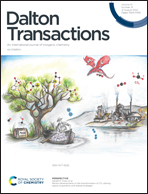Facile synthesis of a glutathione-depleting Cu(ii)-half-salamo-based coordination polymer for enhanced chemodynamic therapy†
Abstract
Chemodynamic therapy (CDT), utilizing Fenton catalysts to convert intracellular H2O2 into toxic hydroxyl radicals (˙OH) to kill cancer cells, has a wide application prospect in tumor treatment because of its high selectivity. Its anticancer effect, however, is unsatisfactory due to the overexpressed glutathione (GSH). Herein, a GSH-depleting Cu(II)-half-salamo-based coordination polymer (CuCP) was prepared and validated by single crystal X-ray crystallography, Hirshfeld surface analyses and DFT calculations. The Cu(II) ions in the coordination polymer are five-coordinated bearing slightly twisted square pyramidal coordination environments and are bridged by phenoxy and alkoxy groups. After internalization by tumor cells, the CuCP could be biodegraded and reduced by GSH to generate a large amount of Cu(I), simultaneously depleting GSH. Subsequently, the Cu(I) ions interact with H2O2 to generate toxic ˙OH through a Fenton-like reaction to enhance their anticancer efficacy. Our study provides useful insights into designing smarter metal-based anticancer agents to improve the CDT efficiency in cancer therapy.



 Please wait while we load your content...
Please wait while we load your content...